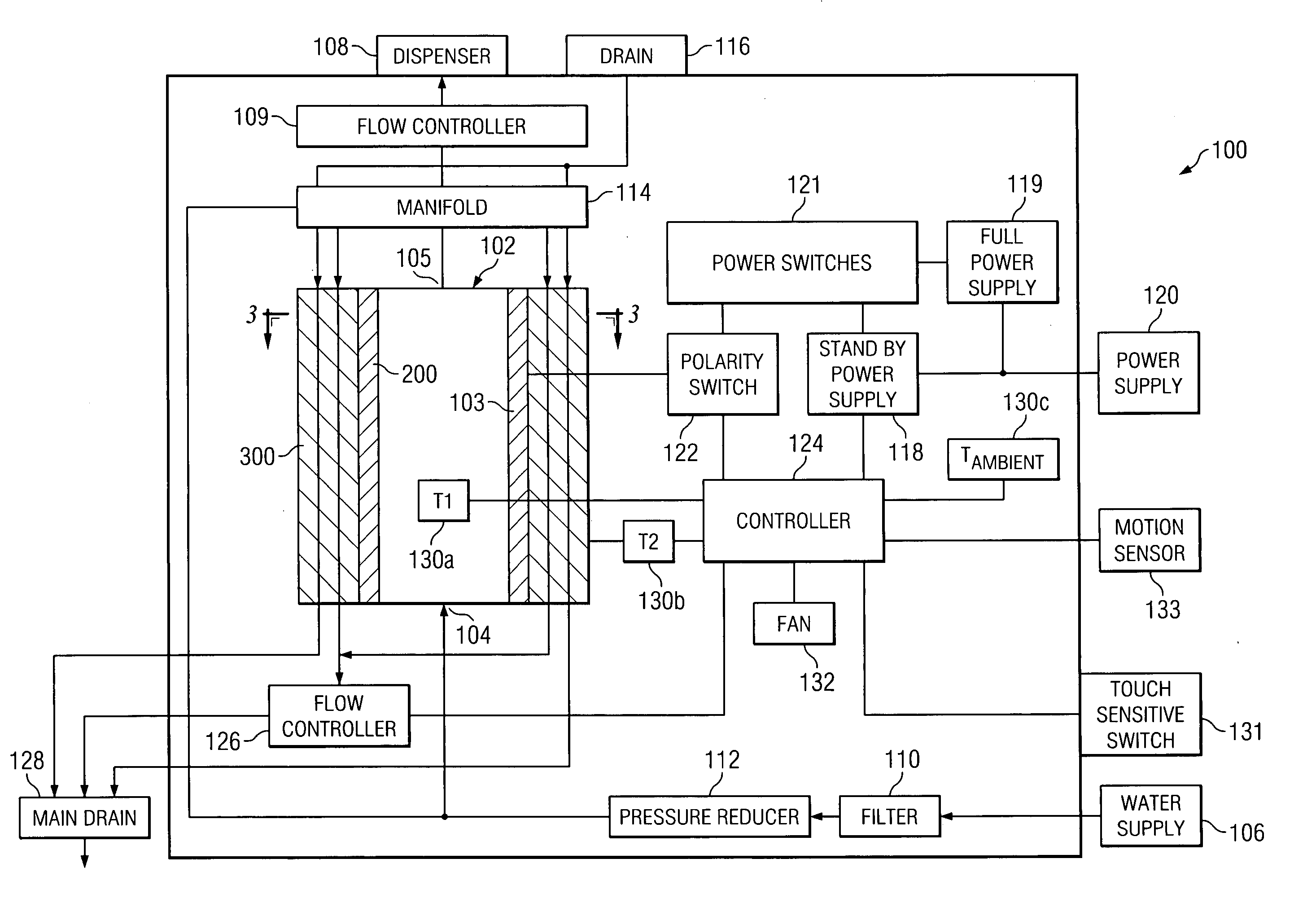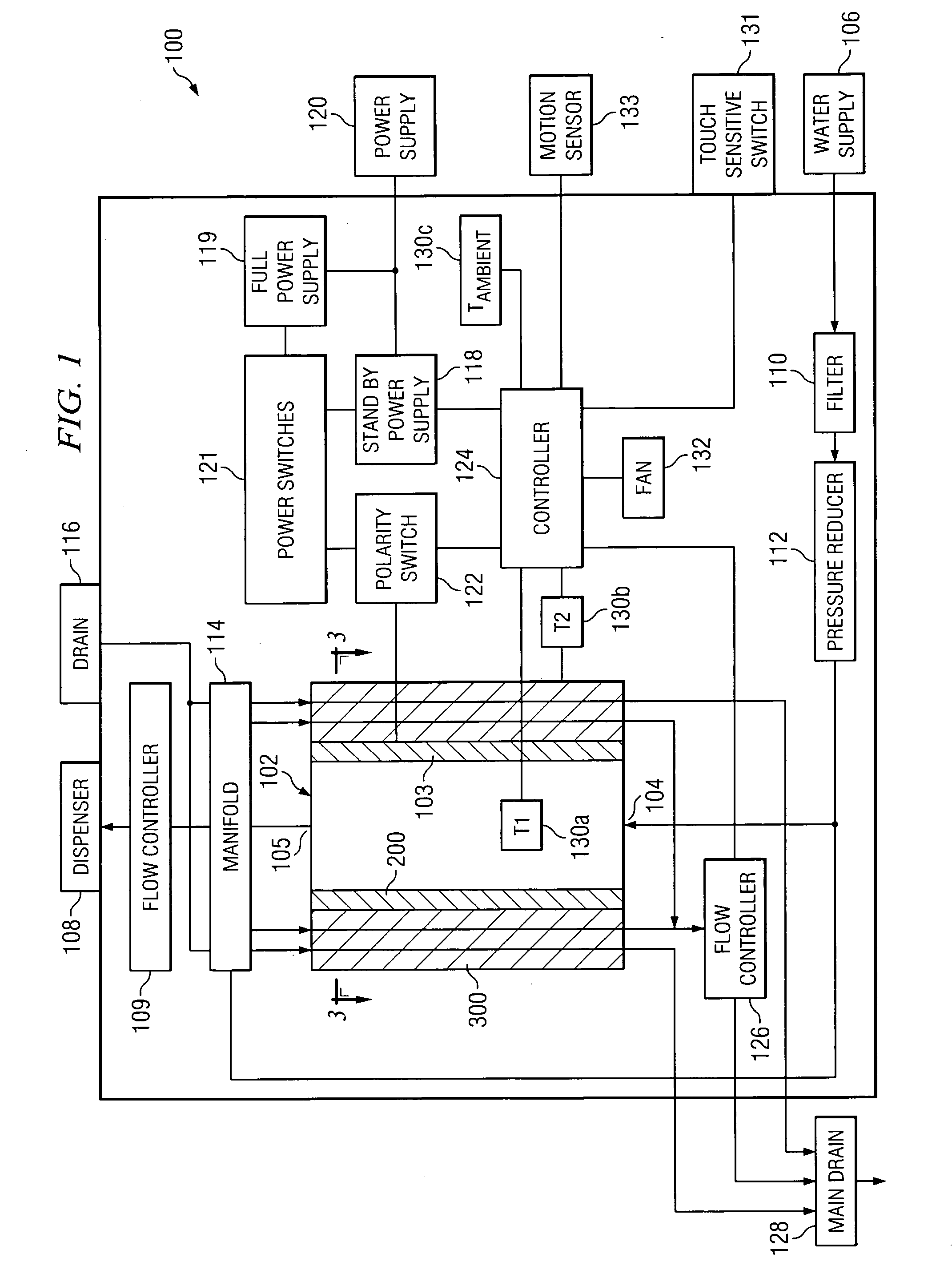Solid-state water cooler
a water cooler and solid-state technology, applied in the field of water dispensers, can solve the problems of noise and vibration, add cooling costs to the building, and air circulation in and around, and achieve the effects of saving energy costs, improving operational efficiency, and consuming less power
- Summary
- Abstract
- Description
- Claims
- Application Information
AI Technical Summary
Benefits of technology
Problems solved by technology
Method used
Image
Examples
Embodiment Construction
[0016] Example embodiments of the present invention and their advantages are best understood by referring now to FIGS. 1 through 7 of the drawings.
[0017]FIG. 1 is a schematic of a solid state water cooler 100 according to one embodiment of the invention. The present invention as described herein is applicable for any suitable water cooler, such as a pressurized water dispenser, a point-of-use water dispenser, a bottle water dispenser, and other devices that store and utilize cooled water. In the illustrated embodiment, water cooler 100 includes a water reservoir 102 having an inlet 104, an outlet 105, and a main body 103. Water reservoir 102 receives water from a water supply 106 and is dispensed via a dispenser 108 when a user desires water.
[0018] According to the teachings of one embodiment of the invention, water reservoir 102 has a plurality of thermoelectric coolers 200 disposed about a perimeter of main body 103 that are operable to control the temperature of the water insid...
PUM
 Login to View More
Login to View More Abstract
Description
Claims
Application Information
 Login to View More
Login to View More - R&D
- Intellectual Property
- Life Sciences
- Materials
- Tech Scout
- Unparalleled Data Quality
- Higher Quality Content
- 60% Fewer Hallucinations
Browse by: Latest US Patents, China's latest patents, Technical Efficacy Thesaurus, Application Domain, Technology Topic, Popular Technical Reports.
© 2025 PatSnap. All rights reserved.Legal|Privacy policy|Modern Slavery Act Transparency Statement|Sitemap|About US| Contact US: help@patsnap.com



